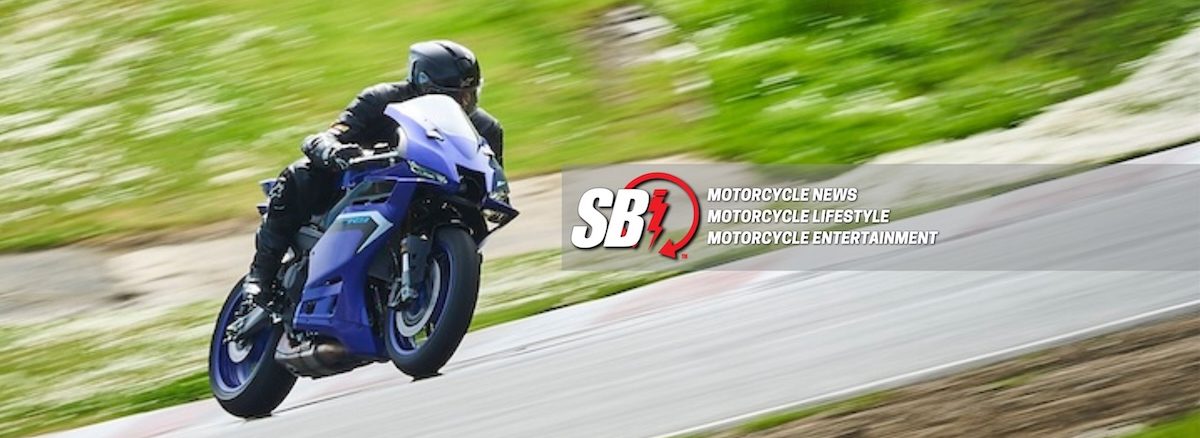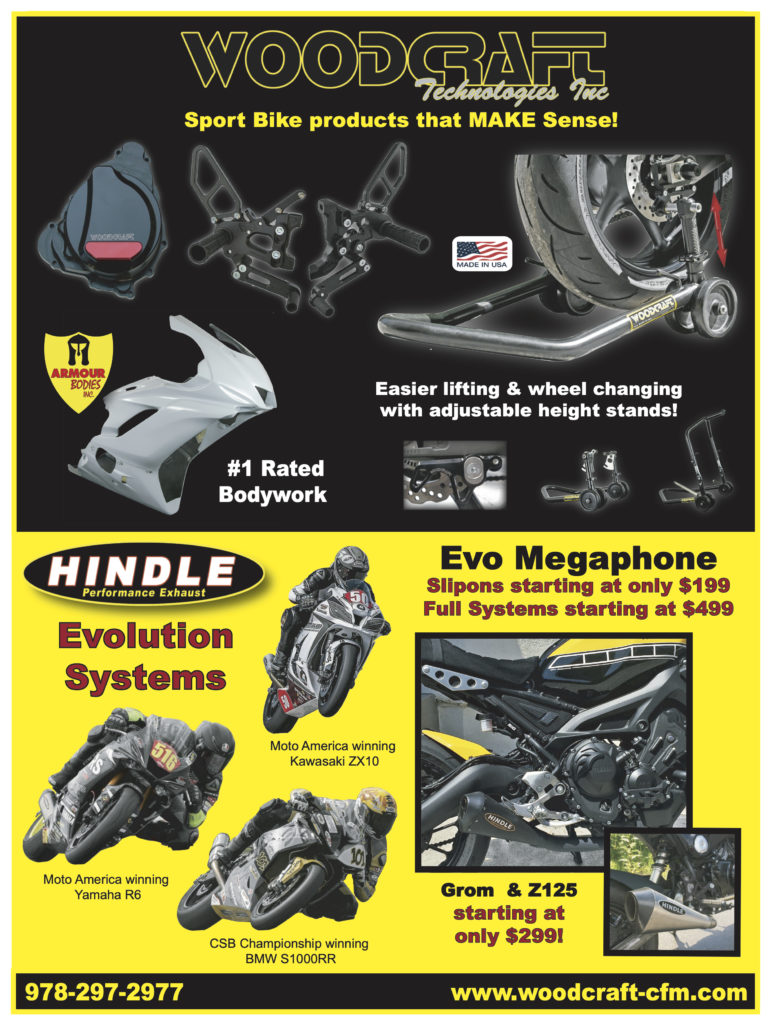
When dissecting the nuances of a racetrack, rider vision is the key to success. I was recently asked by a student when he should look for the next reference mark when he was in a particular turn. He was having a difficult time “transitioning” from mark to mark in several turns and felt that it was slowing him down. As I began to think about this question I recalled many riders in the past who have had similar issues and noted how understanding track vision is a critical building block that can dramatically slow progress if it is missing from your riding foundation.
Reference points are vital to a rider’s ability to run consistent laps on the track. Riders in nearly every basic riding school I have seen are taught the importance of the four basic targets; brake points, turn points, apexes and exit points. Since humans have poor internal speedometers, we instead use our ability to identify and follow concrete markers on the track. We can do this well and riders are always better with reference points than without them. However, the way that different riders use their respective points can make a huge difference in their results.
Perhaps one of the most important points that is not always taught about reference points is that they should not be used individually. In other words, riders should not stare at one reference point until they reach it and then look for the next. When the rider that I mentioned at the beginning of this article asked me when he should “transition” his focus to the next mark, the answer should have been “why are you only using one mark?”
The most obvious symptoms of a rider who focuses on a single point too long are decreased roll speed and delayed drives. As any reference point draws closer, a rider’s vision will become closer and closer to the front wheel. This effectively lowers the horizon, increases the perception of speed and tends to trick riders into slow down more than is really necessary.
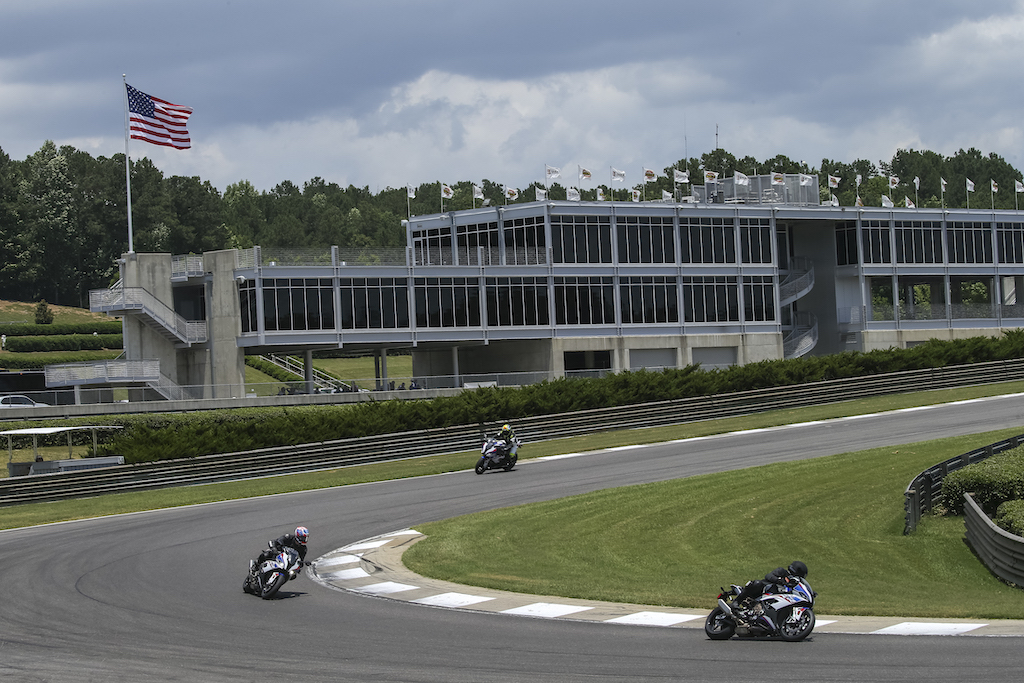
If you can use your imagination, envision driving down the highway at 75 mph and counting the dashed lines as far down road as you can see. The lines come at you slowly and the ride is relaxing and clam. Then, for contrast, open your door and count the dashed lines as they pass by….and you can imagine that things will get exciting quite quickly – especially if there is other traffic around! The natural instinct in this situation is to slow down in an effort to regain a feeling of control. This is the classic feeling created when riders focus on a single reference point.
With this in mind, how far ahead should a rider look? The answer is that proper track vision begins with tracking the farthest reference point that you can see and then using all the references in your periphery to not only understand location but also trajectory. In order to feel 100% comfortable on the track, riders need to understand both where they are and where they are going. In order to create a clear picture of a line, riders need to constantly scan near and far in order to both create the proper line and to keep their vision high enough to reduce the perception of speed.
To illustrate, we have below the ultra-fast entrance to turn 10 at Road Atlanta. For simplicity, we are illustrating a very simple approach to this corner. At the first “X” riders are at 160+ mph and getting ready to roll off and brake somewhere in the area of the white line (highlighted for clarity) before the tight left at the bottom. We have put a second “X” at the bottom of the hill that represents a possible turn point. Riders who are single point focused will watch this point approach the whole way down the hill and just as it approaches transition their view to the next reference (the apex).
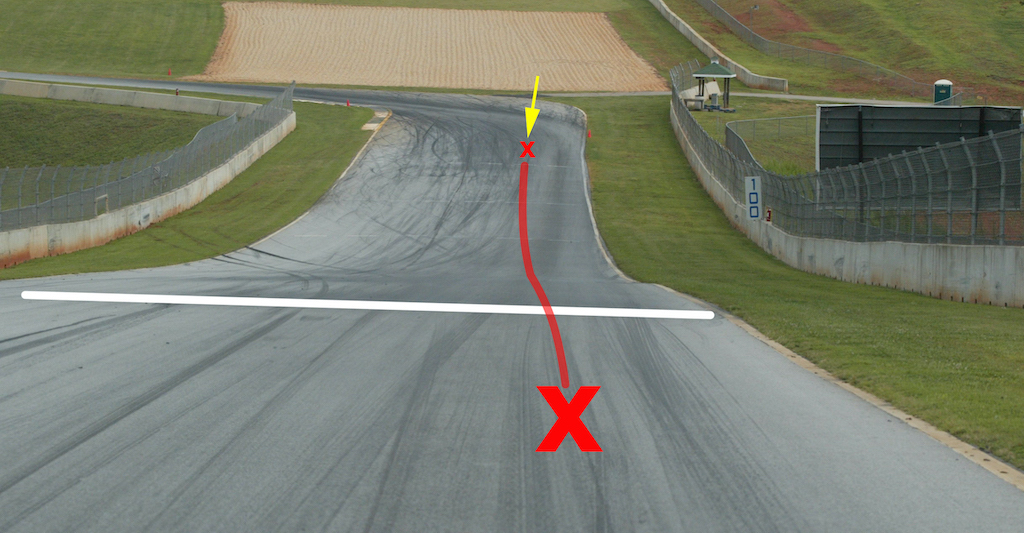
With this single focus and high rate of speed, it’s really easy for riders to feel like they are coming in hot. With eyes fixed on the yellow arrow, the entrance feels shorter than it really is. Since these riders are not looking through the turn, they are not exactly sure how much they need to slow down or how much they need to turn to make the apex and (more importantly) avoid running off the outside at the exit. The entire entrance is stressful, and they often arrive at the apex much too slowly after braking more than is needed down the hill. As they approach the turn point, they quickly look up and need to locate and focus on the apex. Does any of this sound familiar?
In contrast, we will look at the same corner from the standpoint of a rider who uses proper track vision. This rider seeks out the furthest reference point that can be found, which in this case is the exit cone indicated by the yellow arrow. When this rider arrives at the first “X”, the length of track leading to the reference point appears to be almost double that of the first rider. As he scans back and forth from the turn point to the apex to the exit, the green line shows him a clear trajectory through the corner. Just like the driver on the highway counting lines on the horizon, the entrance feels more under control and the perception of speed is lower. When this rider arrives at the turn point, he is already looking through the apex (which is simply in the peripheral vision) and the trajectory through the corner is clear. As a result, the turn input can be made with confidence, he can trail off the brakes smoothly and is much more likely to roll the throttle on as he passes by the apex.
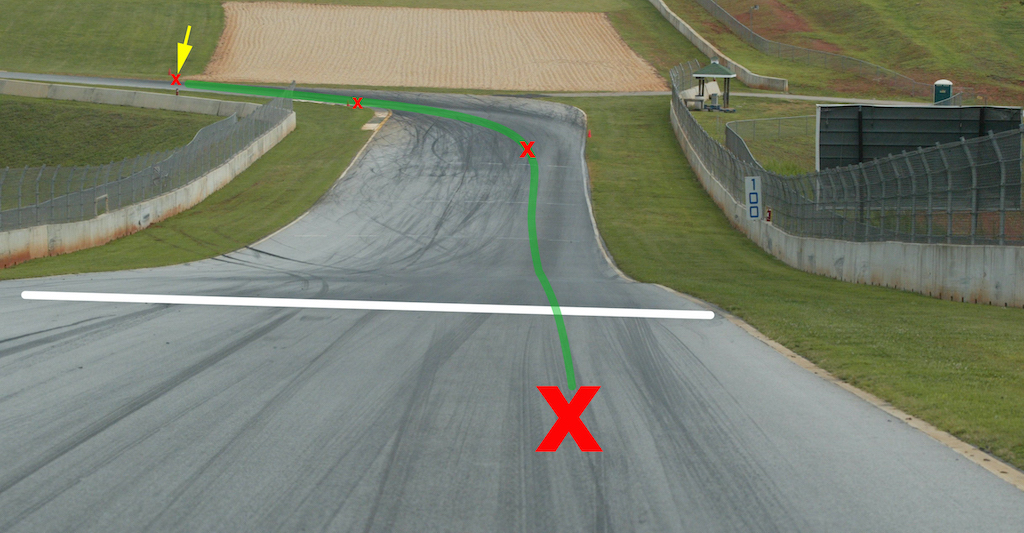
The next time you ride out on the track, try to take your reference “points” and turn them into “curves”. Two points create a straight line, but three or more create a curve. This curve will force you to pick your vision up, which will slow down the scenery around you. Rather than focus from point to point, you will be confidently scanning back and forth from where you are to the furthest point you are going. Your apex will not just become a location at the center of the corner, it will also have a direction associated with it. This extra information is there for the taking and will help make you more confident, more consistent, and faster.
Until next time… Ride fast. Ride safe!
About The Author
Discover more from SportBikes Inc Magazine
Subscribe to get the latest posts sent to your email.
